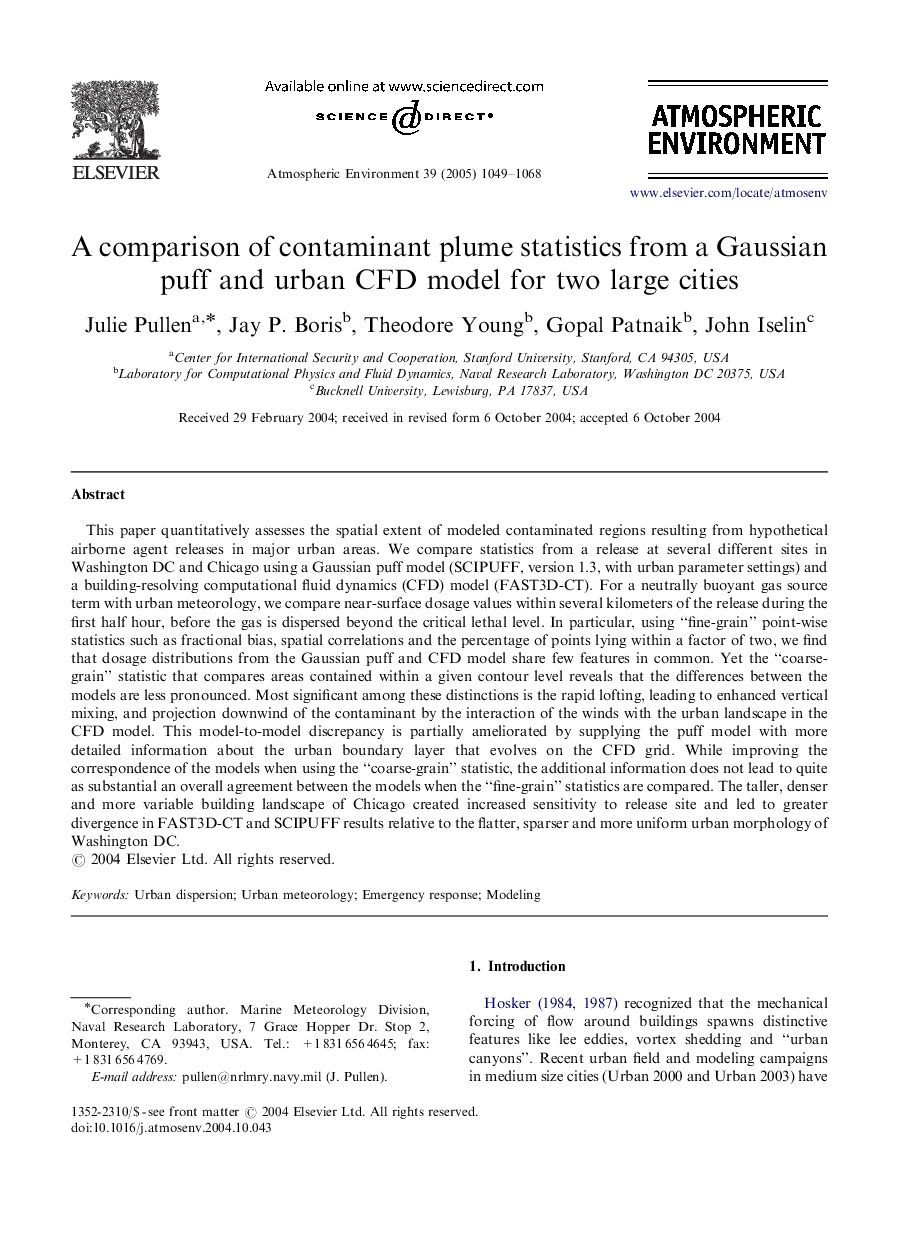| Article ID | Journal | Published Year | Pages | File Type |
|---|---|---|---|---|
| 9458649 | Atmospheric Environment | 2005 | 20 Pages |
Abstract
This paper quantitatively assesses the spatial extent of modeled contaminated regions resulting from hypothetical airborne agent releases in major urban areas. We compare statistics from a release at several different sites in Washington DC and Chicago using a Gaussian puff model (SCIPUFF, version 1.3, with urban parameter settings) and a building-resolving computational fluid dynamics (CFD) model (FAST3D-CT). For a neutrally buoyant gas source term with urban meteorology, we compare near-surface dosage values within several kilometers of the release during the first half hour, before the gas is dispersed beyond the critical lethal level. In particular, using “fine-grain” point-wise statistics such as fractional bias, spatial correlations and the percentage of points lying within a factor of two, we find that dosage distributions from the Gaussian puff and CFD model share few features in common. Yet the “coarse-grain” statistic that compares areas contained within a given contour level reveals that the differences between the models are less pronounced. Most significant among these distinctions is the rapid lofting, leading to enhanced vertical mixing, and projection downwind of the contaminant by the interaction of the winds with the urban landscape in the CFD model. This model-to-model discrepancy is partially ameliorated by supplying the puff model with more detailed information about the urban boundary layer that evolves on the CFD grid. While improving the correspondence of the models when using the “coarse-grain” statistic, the additional information does not lead to quite as substantial an overall agreement between the models when the “fine-grain” statistics are compared. The taller, denser and more variable building landscape of Chicago created increased sensitivity to release site and led to greater divergence in FAST3D-CT and SCIPUFF results relative to the flatter, sparser and more uniform urban morphology of Washington DC.
Related Topics
Physical Sciences and Engineering
Earth and Planetary Sciences
Atmospheric Science
Authors
Julie Pullen, Jay P. Boris, Theodore Young, Gopal Patnaik, John Iselin,
